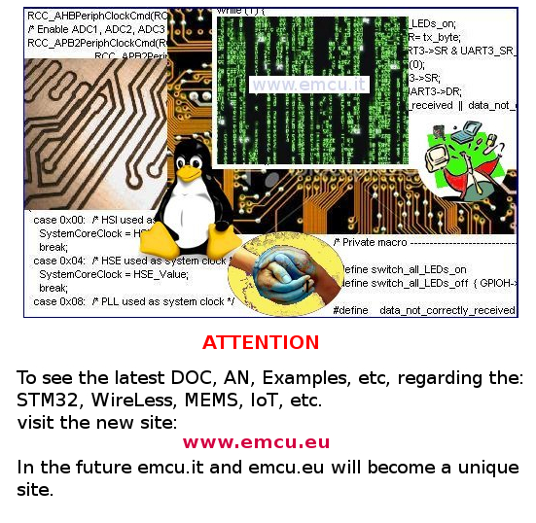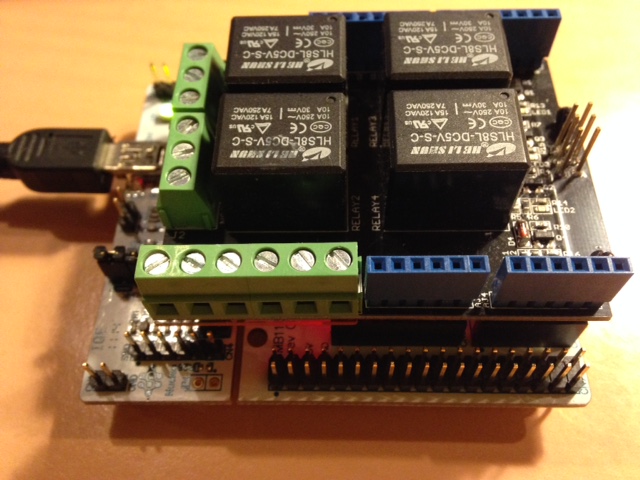

NUCLEO
Page
Home Page
UP
Home Page
This example show how to use NUCLEO-F334R8
and 4 relay shield from
Seeed Studio.
Plug on the NUCLEO-F334R8 the 4 relay shield from Seeed Studio, see below.

Press the BLUE button and you must see the 4 relays go on for 2 second in sequence.
The SW is available for mBed and is here.
The listing is below.
Plug on the NUCLEO-F334R8 the 4 relay shield from Seeed Studio, see below.
Press the BLUE button and you must see the 4 relays go on for 2 second in sequence.
The SW is available for mBed and is here.
The listing is below.
#include "mbed.h" |
UP